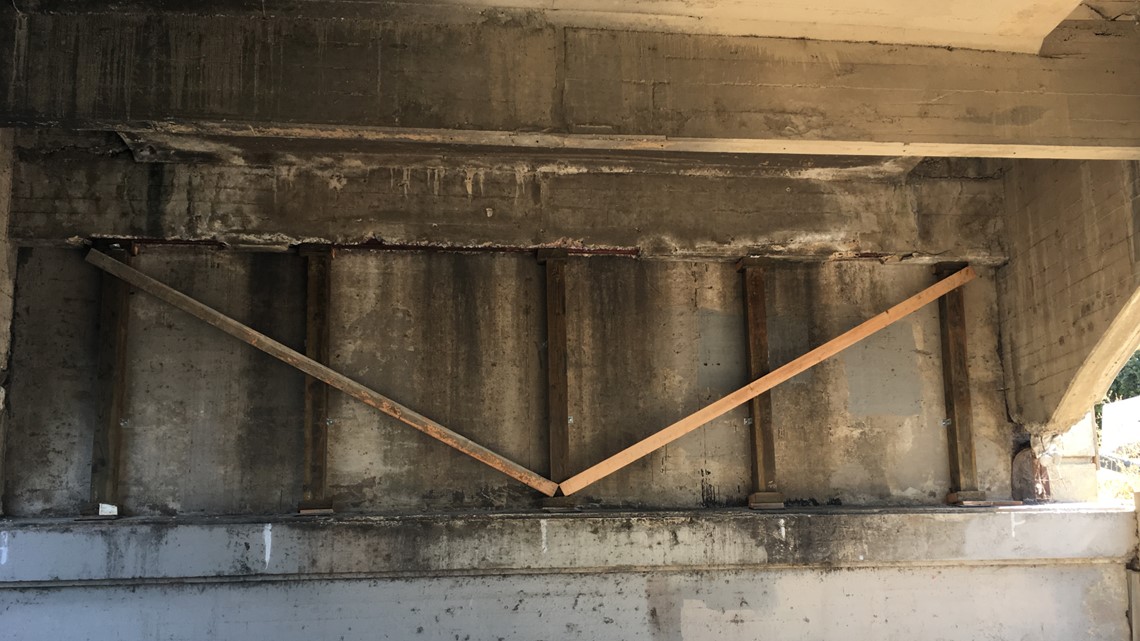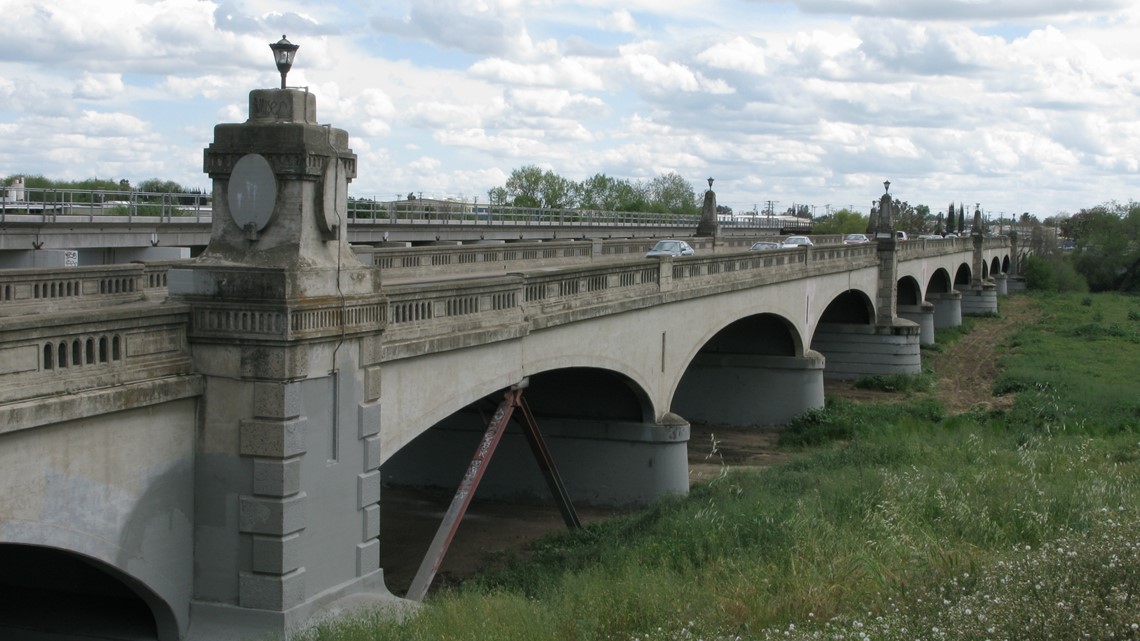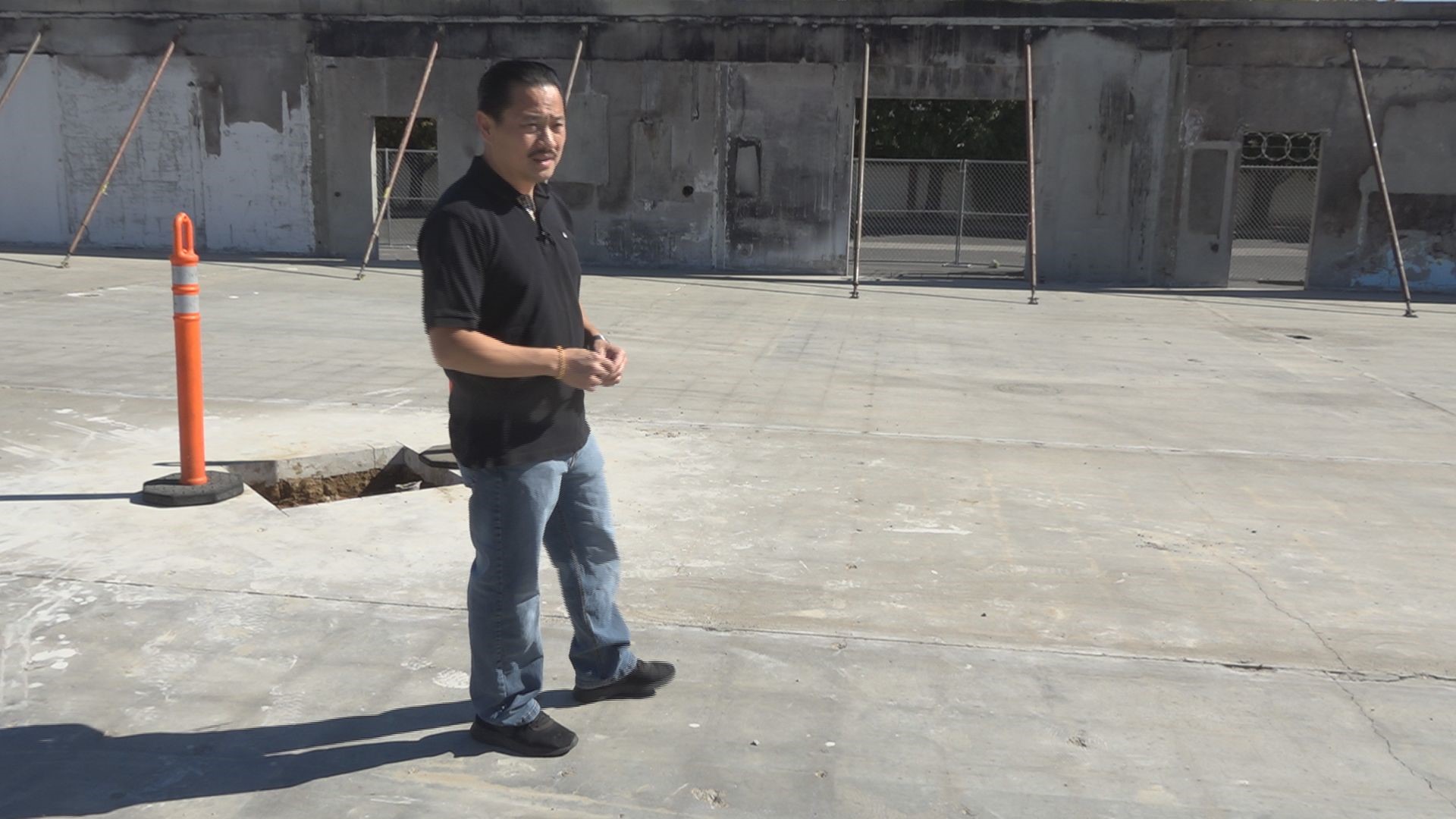MODESTO, Calif. — A 103-year-old experimental bridge in Modesto pretty much has its days numbered.
Boasting one of the worst sufficiency ratings in the state at 5.1 out of 100, weight restrictions, crumbling concrete, and some impromptu wooden support beams, there’s simply no saving the 7th Street Bridge, according to officials with Stanislaus County.
“To save the bridge, you would have to destroy the bridge. There would be nothing left that would be interesting other than the rails on top,” Dave Leamon, public works director for Stanislaus County, said.
The 7th Street Bridge was built in 1916 with an experimental cantilevered design. Basically, that means the bridge is anchored at one end while the other end projects outward. The bridge's weight restriction came about in 1937.
Its design makes the bridge impossible to widen, and the concrete covering the steel structure of the bridge makes the steel impossible to inspect. Its unique cantilevered design is also part of the reason why school buses, transit buses, and semi-truck’s aren’t legally allowed to use it. The bridge has a weight restriction of four tons and those types of vehicles don’t typically meet it.
“Even [if] like a one-ton pick-up goes over it that weighs 8,000 pounds… the bridge will bounce,” Leamon said. “You can feel the bridge bouncing.”
Back in 2018, Leamon said roughly 80 to 100 semi-trucks used the bridge illegally. The end result was a corner of the bridge getting crushed under the stress.
“The bridge has brittle old bones, and those trucks just crushed one corner of the bridge,” Leamon said.
The county used wooden columns to cushion the floor beams holding up that side of the bridge, which are going to be there until the bridge is demolished.


On the other side, there are support beams that were put in back in the 1970s when that part of the bridge started collapsing.


The bridge might have served a need during its earlier years, but as time went by, the vehicles got heavier and modern semi-trucks became more common.
Following failed attempts to replace the ailing bridge back in the 70s and the late 90s/early 2000s, the county and the city of Modesto started a new effort to demolish and replace the bridge in 2012.
“I think we’ve got momentum... maybe, we didn’t have it the other two times. We have tried this before and it kind of collapsed under its own weight,” Leamon said.
The new bridge will have 10-foot sidewalks on either side and a four-foot median in between the four lanes. Most importantly, it will be able to carry modern truck traffic and accommodate traffic flow in the area for the next 30 years, which is good news for people in the area heading into downtown Modesto and trying to avoid Highway 99.
“When there’s a collision on [Highway] 99 or something’s going on with 9th Street, people like detouring onto 7th Street, and there’s a lot of activity. A lot of trips want to go north and south in this part of the county,” Leamon added.
Despite having one of the lowest sufficiency ratings of any bridge in the state at 5.1, the current bridge is safe to use as long as the restrictions are followed. The bridge is inspected twice a year by Caltrans. That sufficiency rating is meant to reflect the bridges health, according to Rick Estrada, spokesperson for Caltrans.
Officials will bring the project to the Board of Supervisor’s Nov. 19 to request hiring Biggs, Cardosa, and Associates to finish the design of the bridge project and manage the right-of-way process for the replacement bridge.
Current plans expect the project to go out to bid and for construction to begin by 2022 and 2023.
FREE ABC10 APP:
►Stay In the Know! Sign up now for ABC10's Daily Blend Newsletter
WATCH ALSO:



